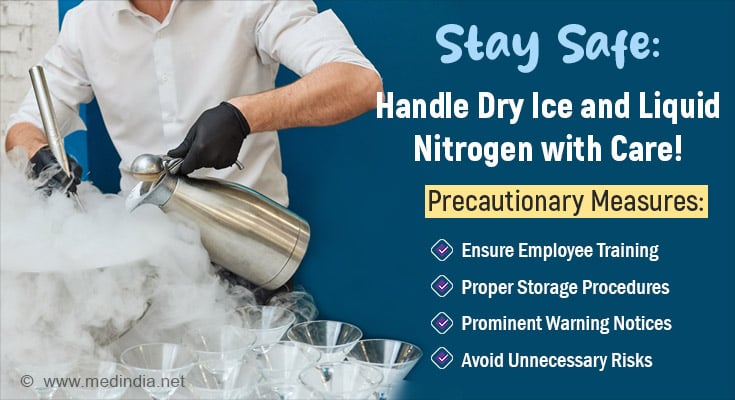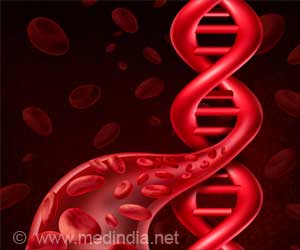- Dry ice is solid carbon dioxide (CO2), sublimating directly from solid to gas, while liquid nitrogen is elemental nitrogen (N2) in a liquid state, vaporizing into gas at room temperature
- Dry ice has a sublimation temperature of -78.5°C, while liquid nitrogen boils at a much lower temperature of -195.79°C
- Both dry ice and liquid nitrogen pose health risks such as frostbite-like injuries and asphyxiation, requiring careful handling and adherence to safety guidelines
Dry Ice, also known as “cardice,” is the solid form of carbon dioxide. It undergoes sublimation, transitioning directly from a solid to a gas without passing through a liquid phase. Dry ice is utilized primarily as a cooling agent due to its ability to reach very low temperatures (-78.5 degrees Celsius) and leaves no residue when it sublimates. This compound is especially valuable in scenarios where mechanical cooling is unavailable, such as in the preservation of perishable foods (1✔ ✔Trusted Source
Cryogenic Liquids and Dry Ice
).
Liquid Nitrogen, on the other hand, is elemental nitrogen (N2) in a liquid state. Existing at extremely low temperatures, it has a boiling point of -195.79 degrees Celsius. Liquid nitrogen is produced through the fractional distillation of liquefied air, where nitrogen gas is cooled and condensed into a liquid. Its applications range from rapid freezing of foods (like ice cream) to cryopreservation of biological materials and scientific research (2✔ ✔Trusted Source
Liquid nitrogen and dry ice in food
).
Direct contact with liquid nitrogen can cause severe frostbite injuries! #foodsafety #healthrisks #medindia’
Advertisement
Key Differences
1.Composition
Dry ice consists of solid carbon dioxide (CO2), while liquid nitrogen is elemental nitrogen (N2) in a liquid state.
2. Physical State
Dry ice remains solid at normal atmospheric pressures and sublimates directly into a gas. In contrast, liquid nitrogen exists as a liquid at very low temperatures and vaporizes into a gas upon exposure to room temperature.
3. Temperature Range
Dry ice has a higher sublimation temperature of -78.5 degrees Celsius, whereas liquid nitrogen boils at a lower temperature of -195.79 degrees Celsius.
4. Applications
Dry ice is primarily used for cooling and preservation purposes where low temperatures are required without leaving any residue. Liquid nitrogen is utilized for a broader range of applications, including cryopreservation and rapid freezing in food processing, owing to its ultra-low temperature properties.
Advertisement
Health Risks Associated with Dry Ice and Liquid Nitrogen
- Temperature and Physical Effects
Direct contact with dry ice or liquid nitrogen can cause frostbite-like injuries, resulting in skin and internal tissue damage if mishandled or ingested. - Skin and Internal Organ Damage
Exposure to these substances can lead to severe burns and tissue damage upon contact, and ingestion can cause gastrointestinal tract and internal organ damage due to their freezing properties. - Risk of Asphyxiation
Liquid nitrogen can displace oxygen in enclosed spaces, potentially leading to asphyxiation if proper ventilation is lacking.
Advertisement
FDA Warnings and Guidelines
The US Food and Drug Administration (FDA) has issued specific warnings and guidelines concerning the safe handling and use of dry ice and liquid nitrogen in food-related settings:
- Avoid Direct Consumption
Dry ice and liquid nitrogen should never be directly consumed or applied to the skin due to the risk of frostbite and internal injuries. - Safe Handling Protocols
Food establishments must implement strict protocols for storage, handling, and disposal to ensure consumer safety. - Training and Awareness
Employees working with dry ice or liquid nitrogen should receive comprehensive training on safety procedures and be made aware of associated risks.
Precautionary Measures
To mitigate the risks associated with liquid nitrogen and dry ice in food preparation, establishments should adhere to the following precautionary measures:
- Employee Training
Conduct regular training sessions to educate food handlers on the safe use and disposal of dry ice and liquid nitrogen. - Proper Storage
Store dry ice and liquid nitrogen in designated areas with proper ventilation and safety measures. - Warning Notices
Display prominent warning notices for both employees and consumers, highlighting the dangers of direct contact or ingestion. - Avoid Unnecessary Risks
Refrain from using these substances in ways that could compromise food safety or public health.
What to Do
- Seek Medical Attention
If you or someone else has ingested dry ice or liquid nitrogen, seek immediate medical assistance. Contact emergency services or visit the nearest hospital. - Stay Calm
Remain calm and try to keep the affected person calm as well. Panicking can escalate the situation. - Provide Information
Provide healthcare professionals with details about the substance ingested, including how much was consumed and when the ingestion occurred. - Monitor Symptoms
Keep a close watch on the affected individual’s symptoms. Look out for signs of distress, difficulty breathing, or unusual reactions. - Follow Medical Advice
Follow all instructions given by medical professionals. Treatment may involve supportive care to alleviate symptoms and prevent complications.
What NOT to Do
- Avoid Inducing Vomiting
Refrain from causing vomiting unless instructed by medical professionals, as it may aggravate internal injuries due to the extreme cold of dry ice or liquid nitrogen. - Delay Water Intake
Do not drink water immediately after consuming dry ice or liquid nitrogen to prevent worsening injuries. Wait for medical advice before consuming any liquids. - Do Not Use Heat
Avoid applying heat to the affected area, as it can cause further damage to tissues. The extreme cold from dry ice or liquid nitrogen can lead to frostbite-like injuries, and heat can exacerbate this condition. - Seek Immediate Medical Attention
Do not wait for symptoms to improve on their own. Prompt medical attention is crucial to reduce the risk of complications. - Avoid Self-Treatment
Refrain from trying to manage the effects of dry ice or liquid nitrogen ingestion on your own. Professional medical assistance should be sought promptly, as healthcare providers are trained to handle such emergencies.
By following these guidelines, establishments can ensure safety in situations involving dry ice or liquid nitrogen, minimizing health risks and protecting public well-being.
References:
- Cryogenic Liquids and Dry Ice – (https://ehs.umass.edu/cryogenic-liquids-and-dry-ice)
- Liquid nitrogen and dry ice in food – (https://www.fda.gov/media/117281/download)
Source-Medindia



